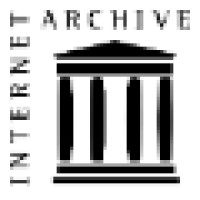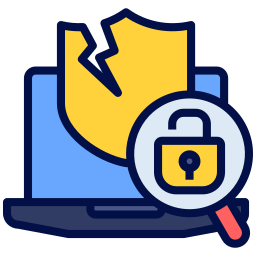
Internet Archive Company Cyber Security Posture
archive.orgThe Internet Archive, a 501(c)(3) non-profit, is a digital library of Internet sites and other cultural artifacts in digital form. Like a paper library, we provide free access to researchers, historians, scholars, people with print disabilities, and the general public. We serve millions of people each day and are one of the top 300 web sites in the world. We are funded through donations, grants, and by providing web archiving and book digitization services for our partners. Our mission is to provide Universal Access to All Knowledge. We began in 1996 by archiving the Internet itself, a medium that was just beginning to grow in use. Today our archive contains: 735 billion web pages 41 million books and texts 14.7 million audio recordings (including 240,000 live concerts) 8.4 million videos (including 2.4 million Television News programs) 4.4 million images 890,000 software programs You can find information about our projects on our blog at https://blog.archive.org/
Internet Archive Company Details
internet-archive
246 employees
41453.0
519
Libraries
archive.org
42
INT_7975925
In-progress
Between 900 and 1000
This score is AI-generated and less favored by cyber insurers, who prefer the TPRM score.
 Internet Archive Global Score
Internet Archive Global Score.png)

Internet Archive Company Scoring based on AI Models
| Model Name | Date | Description | Current Score Difference | Score |
|---|---|---|---|---|
| AVERAGE-Industry | 03-12-2025 | This score represents the average cybersecurity rating of companies already scanned within the same industry. It provides a benchmark to compare an individual company's security posture against its industry peers. | N/A | Between 900 and 1000 |
Internet Archive Company Cyber Security News & History
| Entity | Type | Severity | Impact | Seen | Url ID | Details | View |
|---|---|---|---|---|---|---|---|
| Internet Archive | Breach | 100 | 5 | 10/2024 | INT000101124 | Link | |
Rankiteo Explanation : Attack threatening the organization’s existenceDescription: The Internet Archive endured a significant data breach followed by website defacement and persistent DDoS attacks. Malicious actors compromised 31 million unique email addresses, usernames, bcrypt password hashes, and system data as confirmed by security researcher Troy Hunt. The breach, initially concealed and later publicized via an illicit JavaScript pop-up, and ongoing attacks, have led to service interruptions and exposed the organization to cybersecurity and legal risks. | |||||||
| The Internet Archive | Breach | 100 | 5 | 10/2024 | INT000101524 | Link | |
Rankiteo Explanation : Attack threatening the organization’s existenceDescription: The Internet Archive faced a multifaceted cyberattack resulting in the theft of 31 million user account details and website defacement, as well as sustained DDoS attacks causing continued inaccessibility of the site. Additionally, the organization is contending with lawsuits which threaten its existence. The breach exposes user information and the continued attacks undermine confidence in the Internet Archive's ability to safeguard data, posing threats to its operational continuity. | |||||||
Internet Archive Company Subsidiaries

The Internet Archive, a 501(c)(3) non-profit, is a digital library of Internet sites and other cultural artifacts in digital form. Like a paper library, we provide free access to researchers, historians, scholars, people with print disabilities, and the general public. We serve millions of people each day and are one of the top 300 web sites in the world. We are funded through donations, grants, and by providing web archiving and book digitization services for our partners. Our mission is to provide Universal Access to All Knowledge. We began in 1996 by archiving the Internet itself, a medium that was just beginning to grow in use. Today our archive contains: 735 billion web pages 41 million books and texts 14.7 million audio recordings (including 240,000 live concerts) 8.4 million videos (including 2.4 million Television News programs) 4.4 million images 890,000 software programs You can find information about our projects on our blog at https://blog.archive.org/
Access Data Using Our API

Get company history
.png)
Internet Archive Cyber Security News
The Internet Archive is under attack
The Internet Archive, a nonprofit that hosts a digital library, was recently hit with a double dose of cyberattacks from hackers.
Internet Archive Breached Again—Third Cyberattack In October 2024
The Internet Archive has confirmed a third security breach on Oct. 20 in what has become a series of escalating cyberattacks.
Internet Archive (Archive.org) Goes Down Following “Power Outage” (Updated)
The Internet Archive (or Wayback Machine), an online treasure trove for history buffs, and anyone looking for a blast from the past, ...
The Internet Archive taken down by DDoS attacks
This isn't the first time the archive has been targeted by DDoS attacks, but this week's attacks are the latest in a string of bad news for the ...
Cybersecurity News: Microsoft logs lost, Omni Family breach, Internet Archive Zendesk breach
This warning comes as a result of a bug that prevented critical logs for some enterprise customers from being consistently collected during the ...
Internet Archive hack a signal that cultural institutions are cyber criminals' newest target
Experts say cybersecurity education, training, and awareness are essential as cultural institutions have increasingly become targets for ...
The world’s largest internet archive is under siege — and fighting back
Hackers struck the Internet Archive last week, leaking the information of millions of users and defacing it with a message taunting the ...
Internet Archive data breach exposes more than 31 million user accounts: Reports
The Internet Archive, a popular digital library known for its Wayback Machine, was hacked and suffered a data breach that reportedly exposed ...
Internet Archive web historians target of hacktivist cyber attack
The Internet Archive nonprofit digital library and Wayback Machine operator has been attacked by pro-Palestinian hacktivists.

Internet Archive Similar Companies

Frequently Asked Questions
Explore insights on cybersecurity incidents, risk posture, and Rankiteo's assessments.
Internet Archive CyberSecurity History Information
How many cyber incidents has Internet Archive faced?
Total Incidents: According to Rankiteo, Internet Archive has faced 2 incidents in the past.
What types of cybersecurity incidents have occurred at Internet Archive?
Incident Types: The types of cybersecurity incidents that have occurred incidents Breach.
Incident Details
Can you provide details on each incident?

Incident : Cyber Attack
Title: Internet Archive Cyber Attack
Description: The Internet Archive faced a multifaceted cyberattack resulting in the theft of 31 million user account details and website defacement, as well as sustained DDoS attacks causing continued inaccessibility of the site. Additionally, the organization is contending with lawsuits which threaten its existence.
Type: Cyber Attack
Attack Vector: Data Theft, Website Defacement, DDoS Attacks

Incident : data breach
Title: Internet Archive Data Breach and DDoS Attacks
Description: The Internet Archive endured a significant data breach followed by website defacement and persistent DDoS attacks. Malicious actors compromised 31 million unique email addresses, usernames, bcrypt password hashes, and system data as confirmed by security researcher Troy Hunt. The breach, initially concealed and later publicized via an illicit JavaScript pop-up, and ongoing attacks, have led to service interruptions and exposed the organization to cybersecurity and legal risks.
Type: data breach
Attack Vector: malicious actors
What are the most common types of attacks the company has faced?
Common Attack Types: The most common types of attacks the company has faced is Breach.
Impact of the Incidents
What was the impact of each incident?

Incident : Cyber Attack INT000101524
Data Compromised: User account details
Systems Affected: Website
Downtime: Continued inaccessibility
Operational Impact: Operational continuity threatened
Brand Reputation Impact: Undermines confidence in data safeguarding
Legal Liabilities: Lawsuits threatening existence

Incident : data breach INT000101124
Data Compromised: email addresses, usernames, bcrypt password hashes, system data
Operational Impact: service interruptions
What types of data are most commonly compromised in incidents?
Commonly Compromised Data Types: The types of data most commonly compromised in incidents are User account details, email addresses, usernames, bcrypt password hashes and system data.
Which entities were affected by each incident?
Data Breach Information
What type of data was compromised in each breach?

Incident : Cyber Attack INT000101524
Type of Data Compromised: User account details
Number of Records Exposed: 31000000

Incident : data breach INT000101124
Type of Data Compromised: email addresses, usernames, bcrypt password hashes, system data
Number of Records Exposed: 31 million
Regulatory Compliance
Were there any regulatory violations and fines imposed for each incident?

Incident : Cyber Attack INT000101524
Legal Actions: Lawsuits
How does the company ensure compliance with regulatory requirements?
Ensuring Regulatory Compliance: The company ensures compliance with regulatory requirements through Lawsuits.
References
Where can I find more information about each incident?

Incident : data breach INT000101124
Source: Troy Hunt
Where can stakeholders find additional resources on cybersecurity best practices?
Additional Resources: Stakeholders can find additional resources on cybersecurity best practices at and Source: Troy Hunt.
Additional Questions
Impact of the Incidents
What was the most significant data compromised in an incident?
Most Significant Data Compromised: The most significant data compromised in an incident were User account details, email addresses, usernames, bcrypt password hashes and system data.
What was the most significant system affected in an incident?
Most Significant System Affected: The most significant system affected in an incident was Website.
Data Breach Information
What was the most sensitive data compromised in a breach?
Most Sensitive Data Compromised: The most sensitive data compromised in a breach were User account details, email addresses, usernames, bcrypt password hashes and system data.
What was the number of records exposed in the most significant breach?
Number of Records Exposed in Most Significant Breach: The number of records exposed in the most significant breach was 31.0M.
Regulatory Compliance
What was the most significant legal action taken for a regulatory violation?
Most Significant Legal Action: The most significant legal action taken for a regulatory violation was Lawsuits.
References
What is the most recent source of information about an incident?
Most Recent Source: The most recent source of information about an incident is Troy Hunt.
What Do We Measure?
















Every week, Rankiteo analyzes billions of signals to give organizations a sharper, faster view of emerging risks. With deeper, more actionable intelligence at their fingertips, security teams can outpace threat actors, respond instantly to Zero-Day attacks, and dramatically shrink their risk exposure window.
These are some of the factors we use to calculate the overall score:
Identify exposed access points, detect misconfigured SSL certificates, and uncover vulnerabilities across the network infrastructure.
Gain visibility into the software components used within an organization to detect vulnerabilities, manage risk, and ensure supply chain security.
Monitor and manage all IT assets and their configurations to ensure accurate, real-time visibility across the company's technology environment.
Leverage real-time insights on active threats, malware campaigns, and emerging vulnerabilities to proactively defend against evolving cyberattacks.




